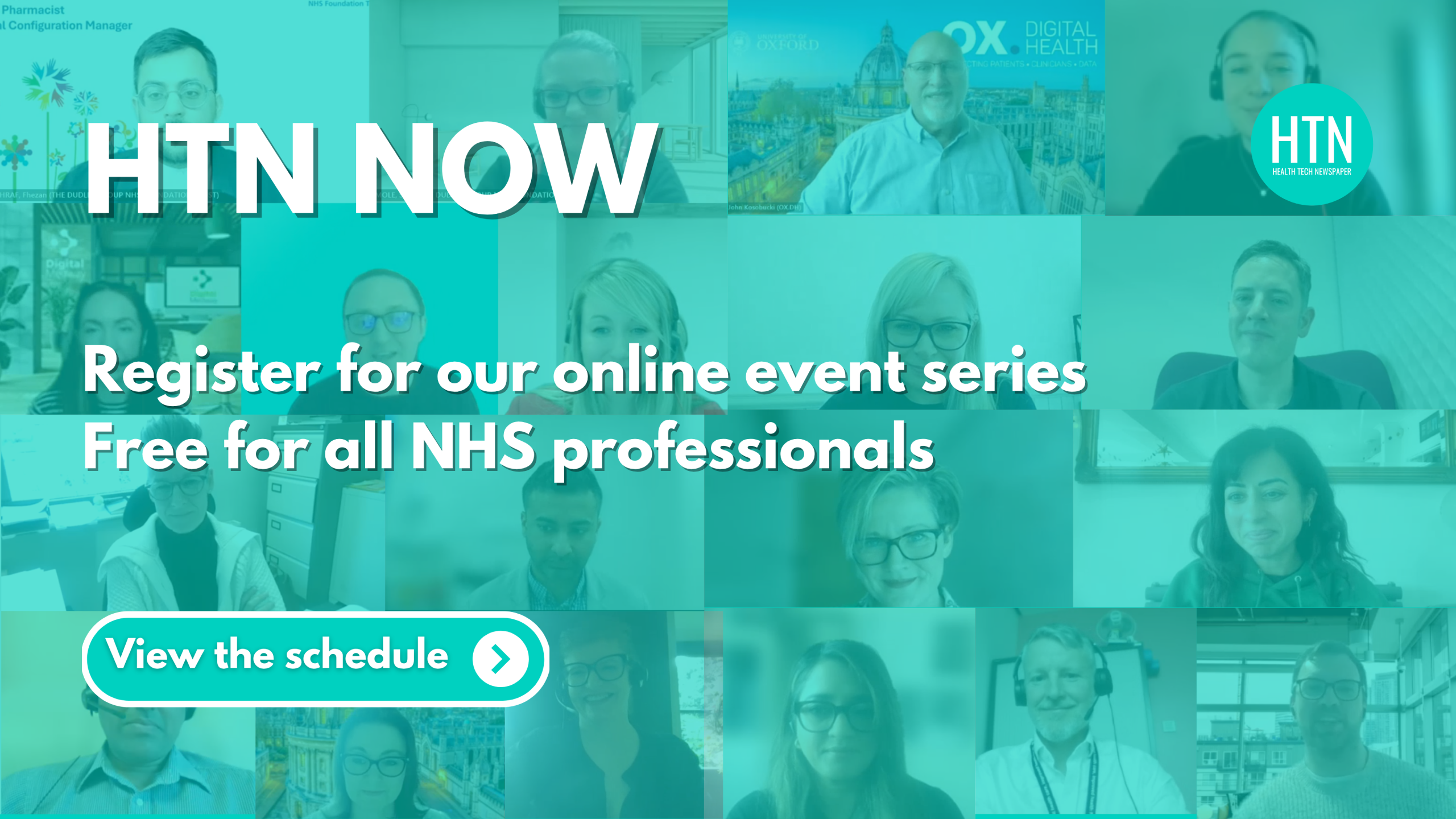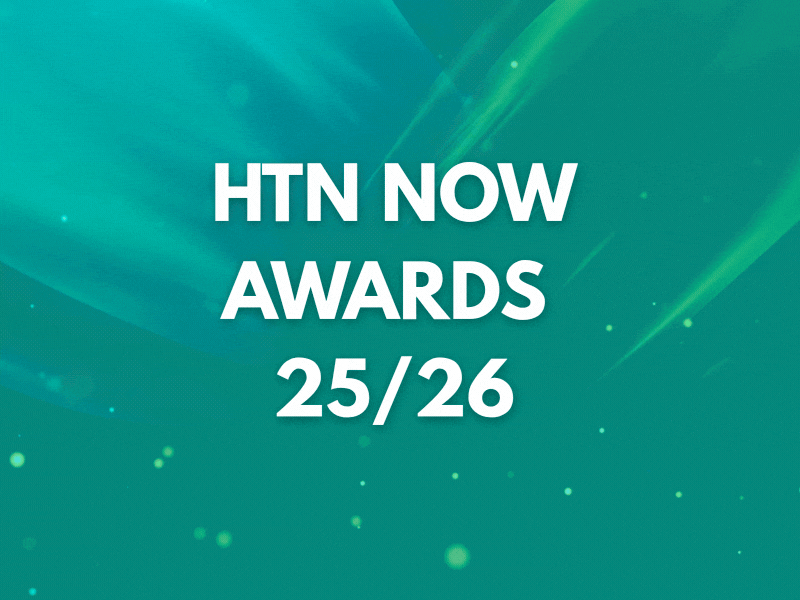For a recent HTN Now webinar focusing on the importance of baselining current position to inform EPR implementation, we were joined by Tara Athanasiou and Nick Robertson, director of advisory & strategic, and director of training & change at Ideal Health.
Tara and Nick took us through a presentation discussing how HIMSS EMRAM (electronic medical records adoption model), INFRAM (infrastructure and adoption) and AMAM (analytics) maturity models can provide targeted roadmaps to ensure a smooth implementation; and how Organisational Readiness Assessments (ORA) and Training Requirements Assessments (TRA) can help determine whether a healthcare organisation has the necessary capability, capacity, structure, culture, and resources required for an EPR implementation.
Tara began by outlining some of the most common pitfalls of EPR implementations, including a lack of early buy-in, inadequate resource allocation, failing to prioritise training, and data quality and migration.
“An EPR implementation is probably the biggest digital transformation programme that any organisation is going to embark on,” she said, “and it doesn’t just affect digital. It affects everybody and everything within and even outside of the organisation, whether that’s your partners, or patients and their families.”
Tara noted that her team “often” sees situations where the amount of work involved post go-live has not been taken into account and adequate resources have not been allocated, in addition to fatigue among staff from the process. Any of these issues can lead to delays, cost overruns, issues with user adoption, and ultimately, not realising the benefits or value identified within the business case.
Assessing the ‘so what?’ and the ‘why?’ questions
Considering ‘so what?’ and ‘why?’ questions are “massively important” when it comes to approaching an implementation, Tara emphasised. “It’s easy to get focused on what is happening with the programme and the project plan, thinking about logistics, resources, internal comms; all of this is important, but we should also remember why we’re actually doing it.
“Keeping in mind what success will actually look like is one way of working toward this,” she added; but that is going to look very different for different stakeholders.
Picking out some of the key drivers for different departments and stakeholders, Tara highlighted “levers” such as integration, supporting ways of working, reliability, efficiency, patient-centricity, interoperability, and ROI.
“We’re not just looking at systems; we’re looking at people,” she said. “They have different priorities, different concerns, different fears about change, and different ambitions about what they would like to see from the EPR implementation.”
Understanding different workflows and how the EPR can support the ways users are currently working is key, she said, as well as looking at how that can continue to be optimised in the future. On future-proofing, Tara recommended planning for things like AI and advanced analytics; particularly what information governance in this area might look like, and how policy is aligned.
Whilst terminology such as “interoperability” and “integration” might not be the language used by patients, she noted that it is “certainly an aspiration” for patients to have all of the information about themselves captured in a single place and being seamlessly available across different care settings, rather than having to repeat themselves or having information inputted into different systems.
Baselining and planning for EPR implementation
Tara explained how taking a baseline assessment of an organisation’s current position is a good place to start – not only for measuring success, but also in determining what needs to be achieved, the main challenges existing with both systems and people, and the areas where the organisation is performing well.
“EPR programmes are big and complex, and you can’t achieve all the benefits that you want to achieve at once; it’s about looking at where you’ll get the biggest bang for your buck in terms of that transformational change, and how that then leads into where you should actually start your efforts.”
These considerations help build the case for change, as well as adding evidence for the business case. “You can measure success from that, point out where you’ve been successful, and focus on any potential future enhancements which need to be made.”
She stressed how digital maturity – including the systems, processes, workflows, and adoption – is essential to allowing for transformation, moving on to discuss how HIMSS EMRAM, INFRAM and AMAM models can be used to support the baselining and targeting of change within an EPR programme.
“One of the benefits of the HIMSS adoption models is that they offer a holistic approach, and they focus on output; not just systems, but outcomes and impact,” she stated.
Outputs from HIMSS include “clear, actionable, and benefit-focused roadmaps” for organisations, Tara went on, and outcomes can be used for things like EPR implementation plans, digital strategy refreshes, business cases, and funding applications.
Answering the ‘so what?’ question, Tara outlined some of the outcomes of this process, including insights that focus digital transformation; evidence to drive roadmaps; a “yardstick” to measure impact, benefits, and value; the ability to target interventions around training, adoptions, benefits, and pathway; and evidence to drive value from optimisation.
Organisational Readiness Assessments
Nick took over from Tara to explain the role of the Organisational Readiness Assessment, which Nick described as “reviewing previous experience of delivering change, looking at how successful that has been, as well as your organisational capability, capacity, culture, and preparation.”
For an organisation on an EPR journey, the best time to conduct this assessment would be as soon as the Outline Business Case is completed, Nick said. “Or for a departmental solution, you could bring us in a few months before you actually start to execute.”
Even if an organisation is not undergoing any particular project or transformation, the assessment is useful “at any point”, Nick added. “The lessons you can learn from it will help you prepare; and it’s important to look at it as a precursor to your organisation’s success at delivering change.”
Taking your organisation on a journey through that change can be challenging, he acknowledged, “and we have to avoid that ‘valley of despair’ in the Kubler Ross Change Curve. We can do that by ensuring we have good communication, good information, good engagement, keeping things positive and we keep everyone informed of what’s going on.”
When it comes to organisational experience, Nick highlighted several key considerations, including the availability and accessibility of leadership; programme transparency; change fatigue or resistance; communication; training; lessons learned; and preparation activities.
“Having transparency is important in bringing the organisation with you,” he said, “and there are probably 200 change programmes going on across the organisation at any one time. So taking into account change fatigue is essential, as is two-way communication, and not letting lessons learned from previous programmes just sit there gathering dust.”
In terms of preparation activities, Nick noted taking steps such as aligning workflows; rewriting Standard Operating Procedures (SOPs) to reflect that; looking at data quality and consistency to check what is migrated across will be “an accurate representation of the patient journey”; looking at data warehousing and infrastructure, and making upgrades to ensure devices will be capable of sending and receiving information in real-time.
Interviewing everyone from senior leadership to frontline staff is essential, he continued, “because the leadership’s vision and the frontline staff’s experience might be disconnected. It’s good to highlight that and see how things can be done better.”
According to Nick, the team at Ideal Health utilise all of this information from assessments and interviews to offer a “documented assessment of the trust’s experience of leading change and the state of readiness for the upcoming change”, covering capacity and capability, as well as recommendations around preparing for the change.
“If you’re not using a change model consistently, now is the time to choose one,” he said, “and if you can experiment with a change methodology on smaller projects, you can figure out what works, ready to roll out across the whole organisation with confidence.”
Training Requirements Assessment
Moving on to talk about the Training Requirements Assessment, “an assessment to inform the organisation of the delta between today’s capacity and capability, and what is required for an EPR programme,” Nick talked about how his team offer a detailed review of how training is currently delivered; what the capability and capacity is; informing the training strategy and plan; and providing early awareness of requirements.
“It’s important to do this early, because if you have challenges around things like digital literacy, you’re going to need a lot of lead time to try and address that,” Nick said, “so the earlier you identify that, the better.”
Conducting interviews with trainers, clinical leadership, operational leads, IT programme leads, estates managers, and community managers, is a key way of finding out about the organisation’s current training capability and capacity, and identifying areas requiring extra support, Nick explained
As in the case of the Organisational Readiness Assessment, the team can use all of the insight gathered from this work to put together a documented assessment of the organisation’s current training, requirements for upcoming training, and recommendations around best approaches, informing the strategy going forward.
“It’s worth mentioning that the questions we use are completely customisable,” he continued, “so they can be tweaked or changed depending on what you would like to dig into, and interviews can be conducted either virtually or on site. You’ve got to think about the people – the people will either make or break your journey and adoption, and the more we can do upfront to bring them on the journey and ensure they’re confident and competent, the better the outcomes down the line.”
We’d like to thank both Tara and Nick for taking the time to share their insight and experience on this topic with us.





